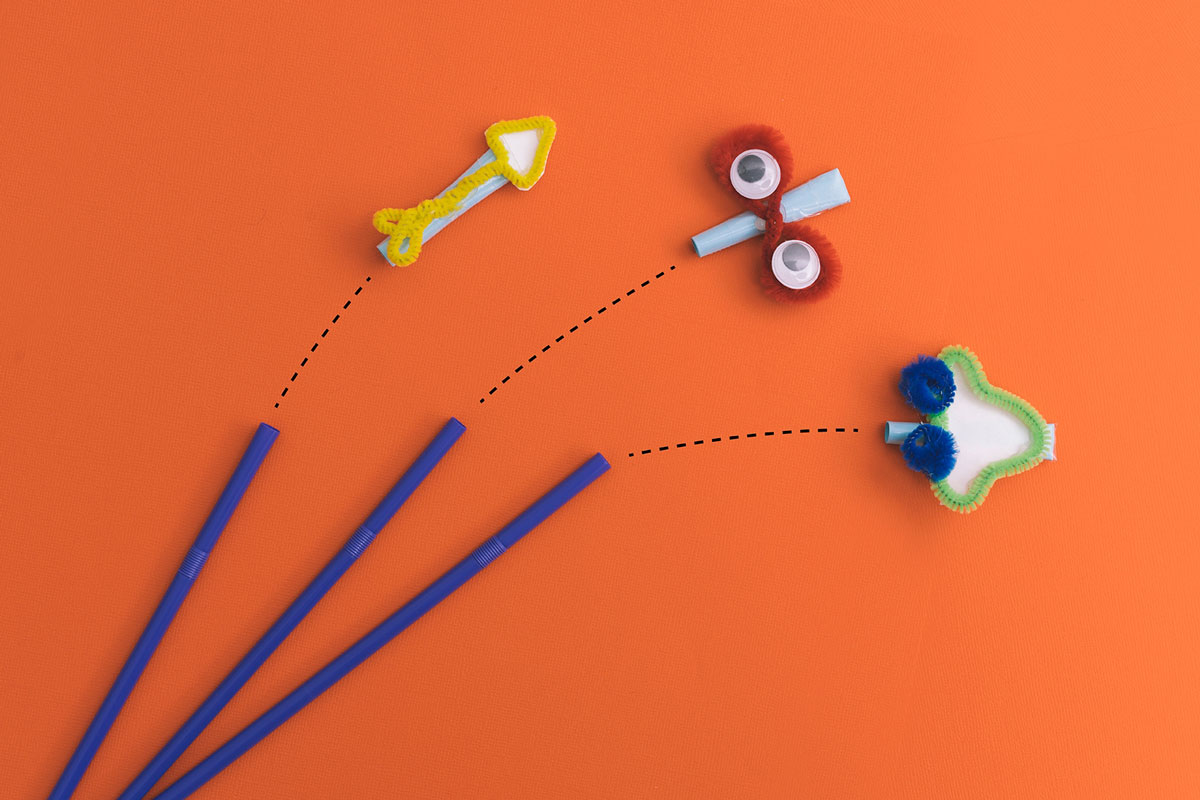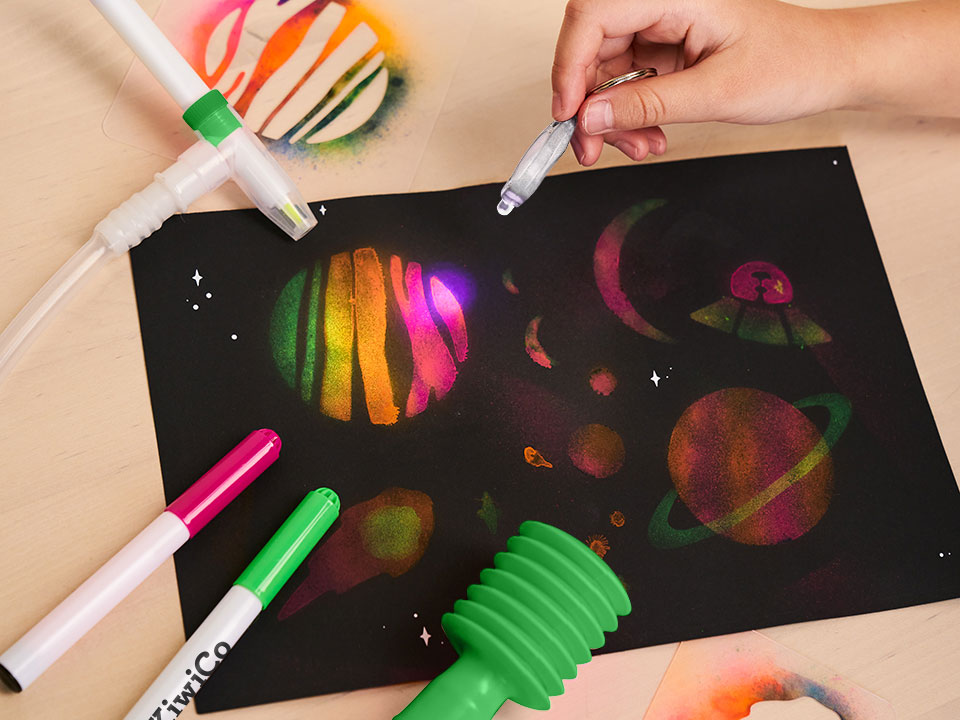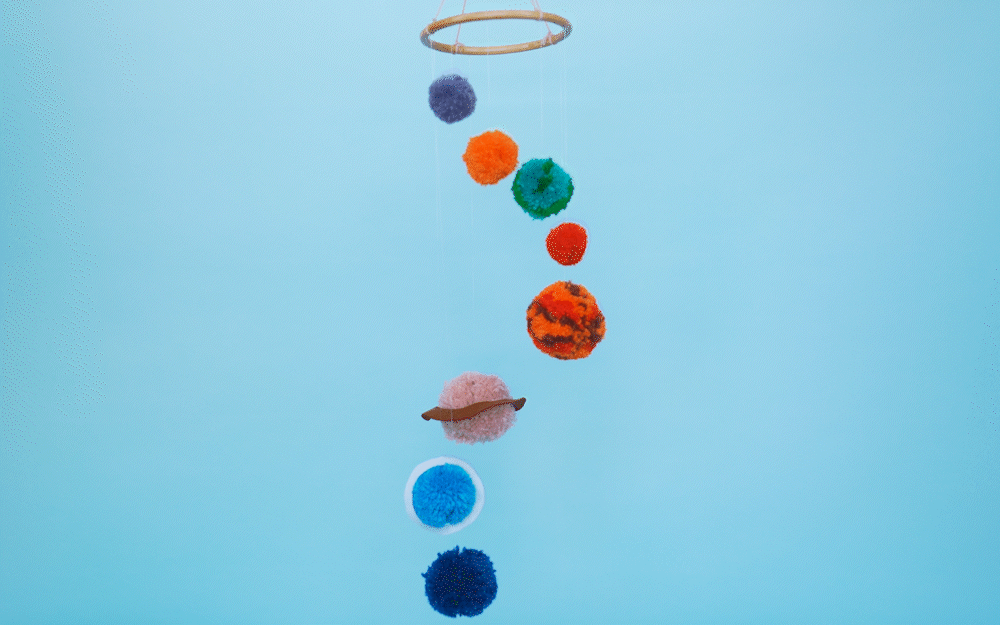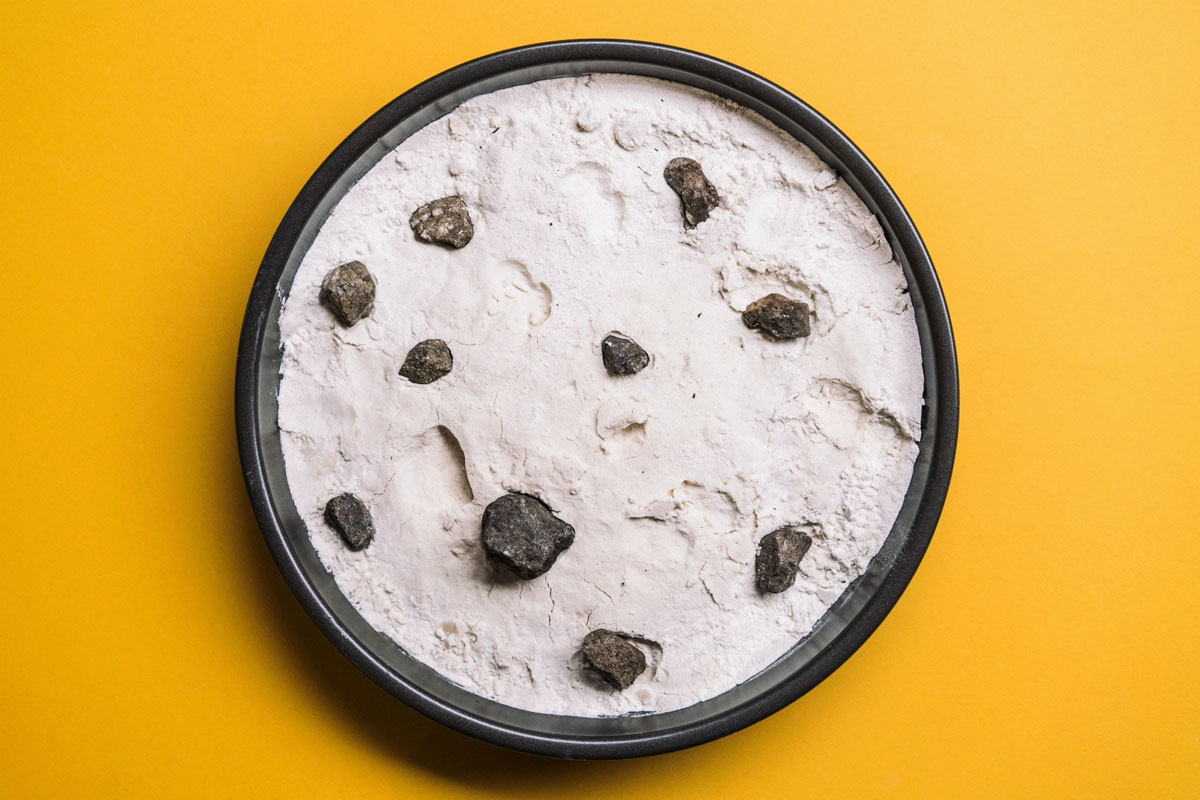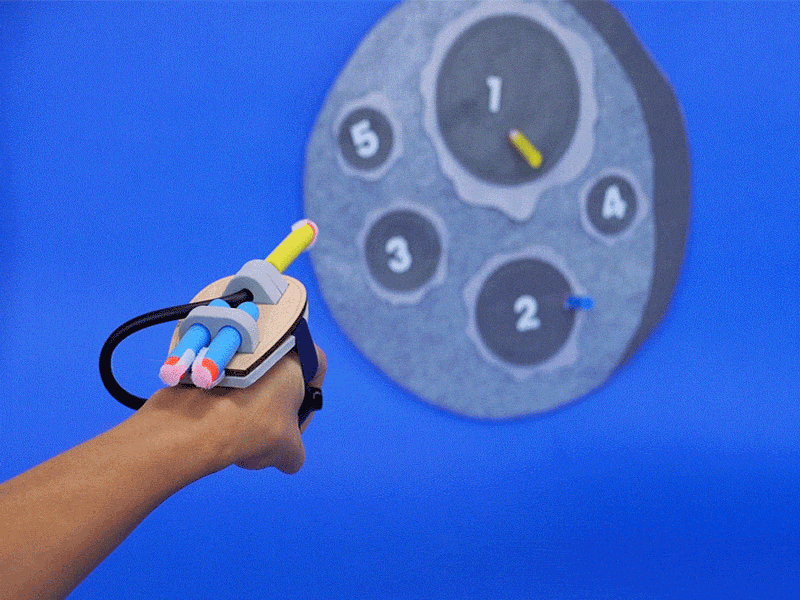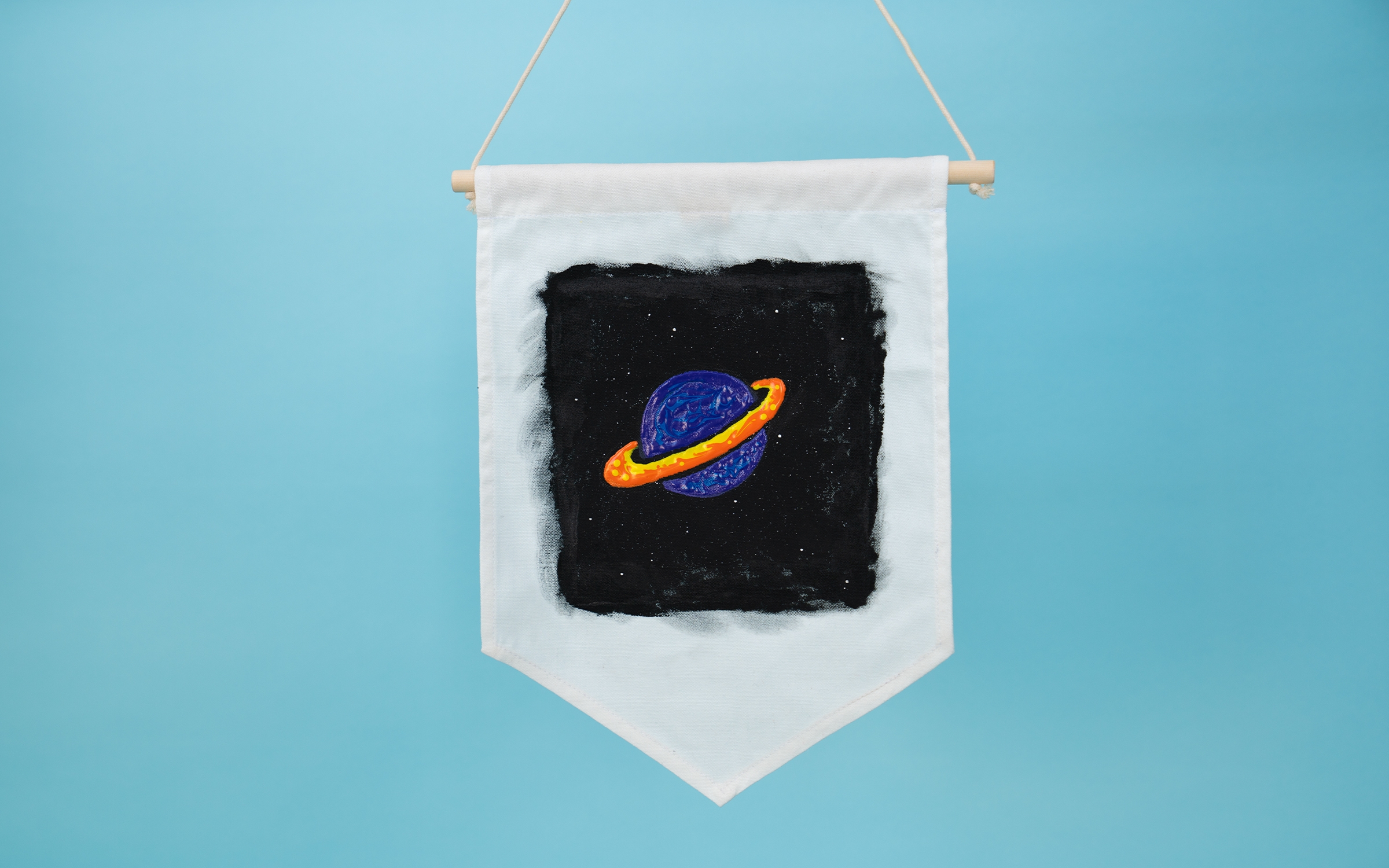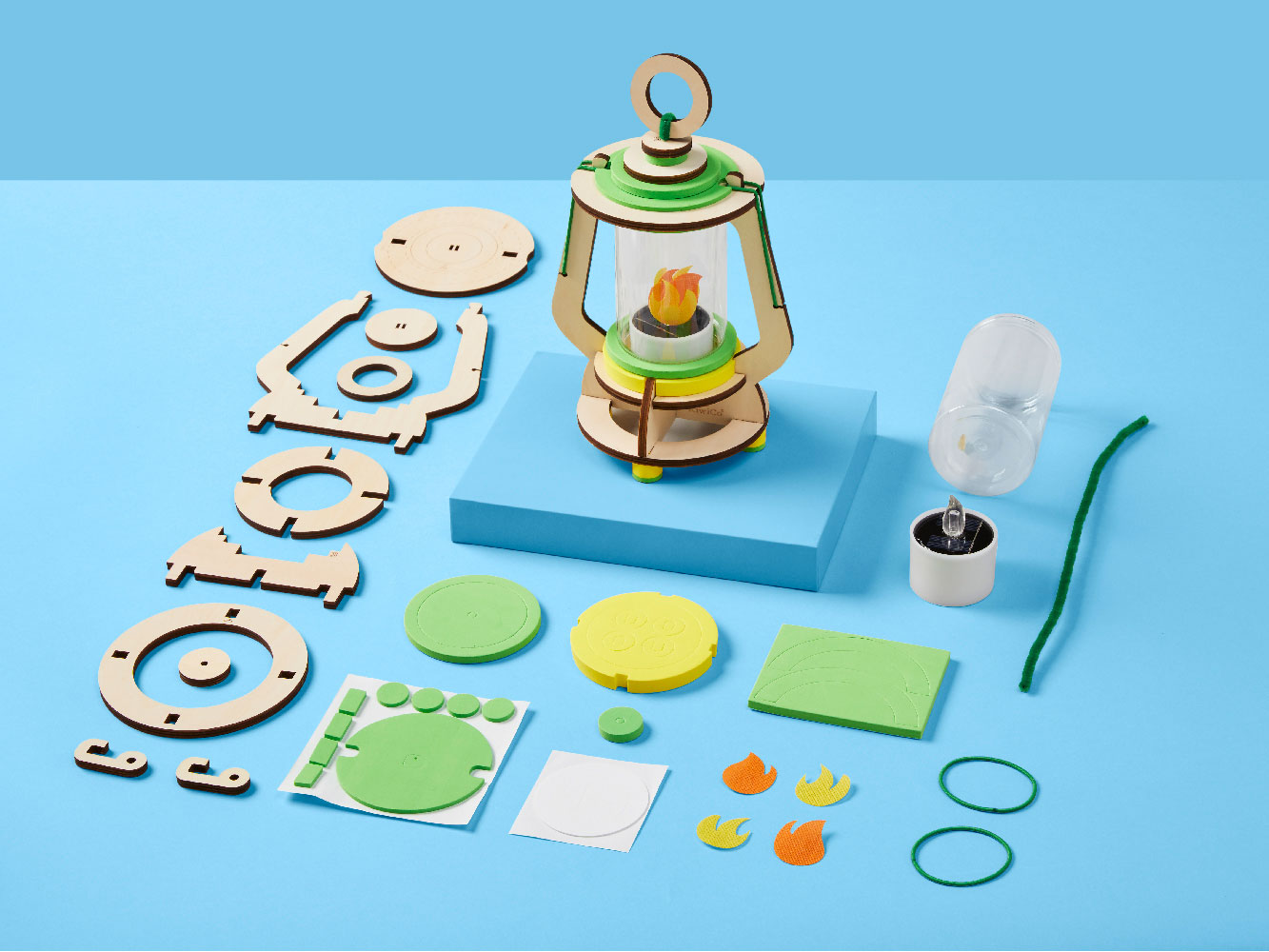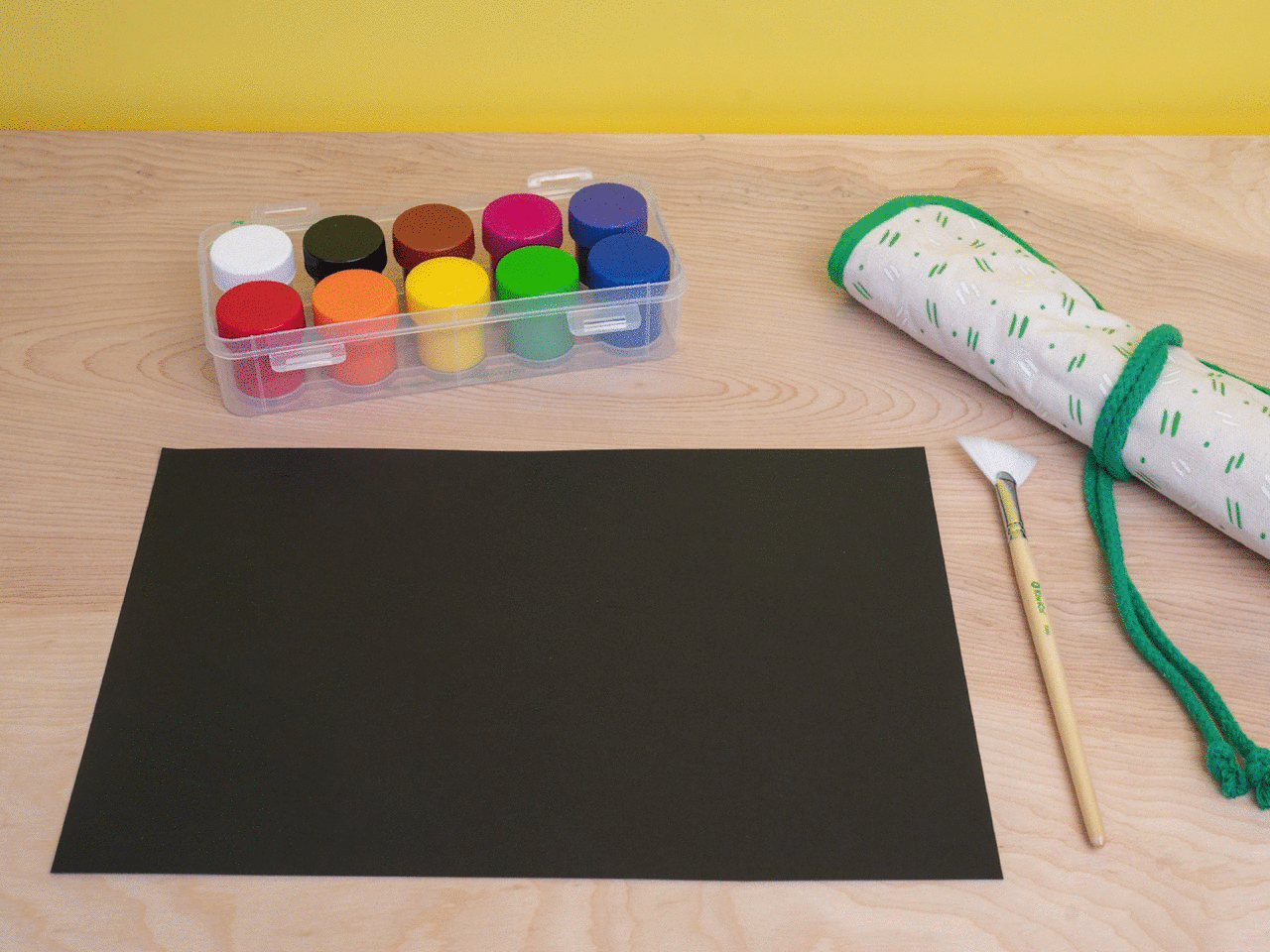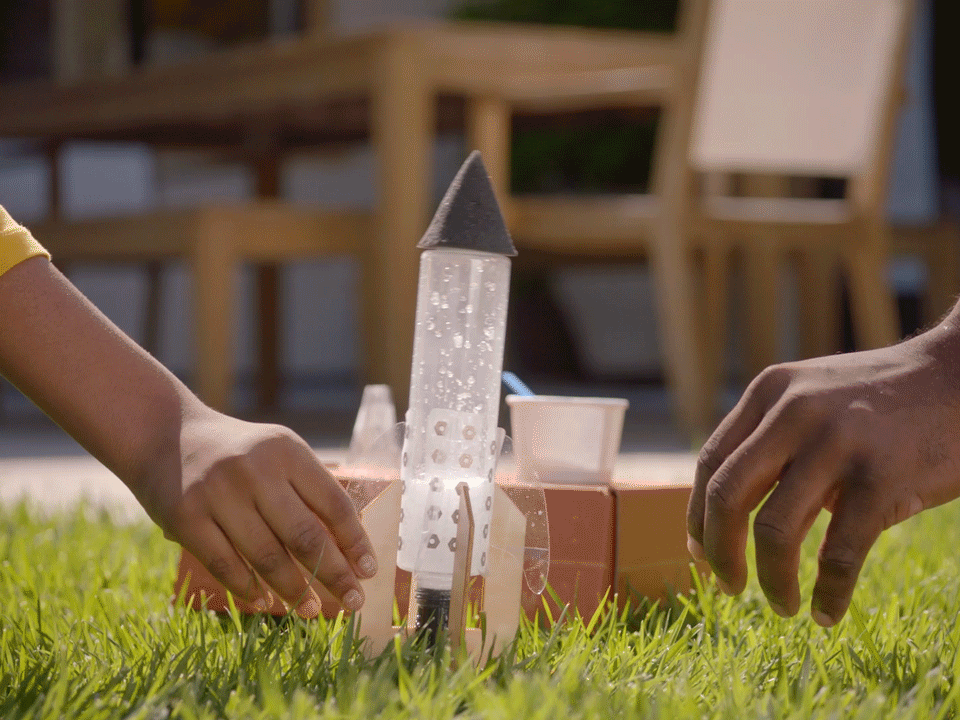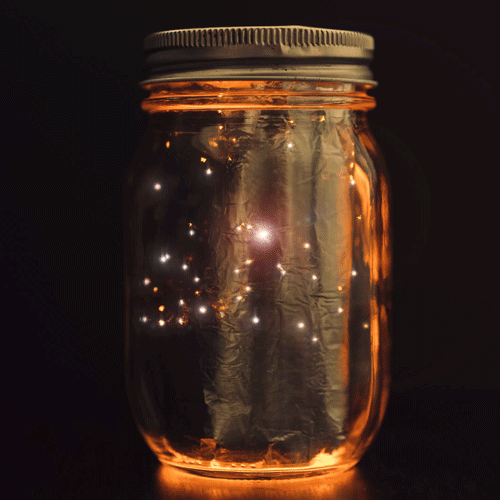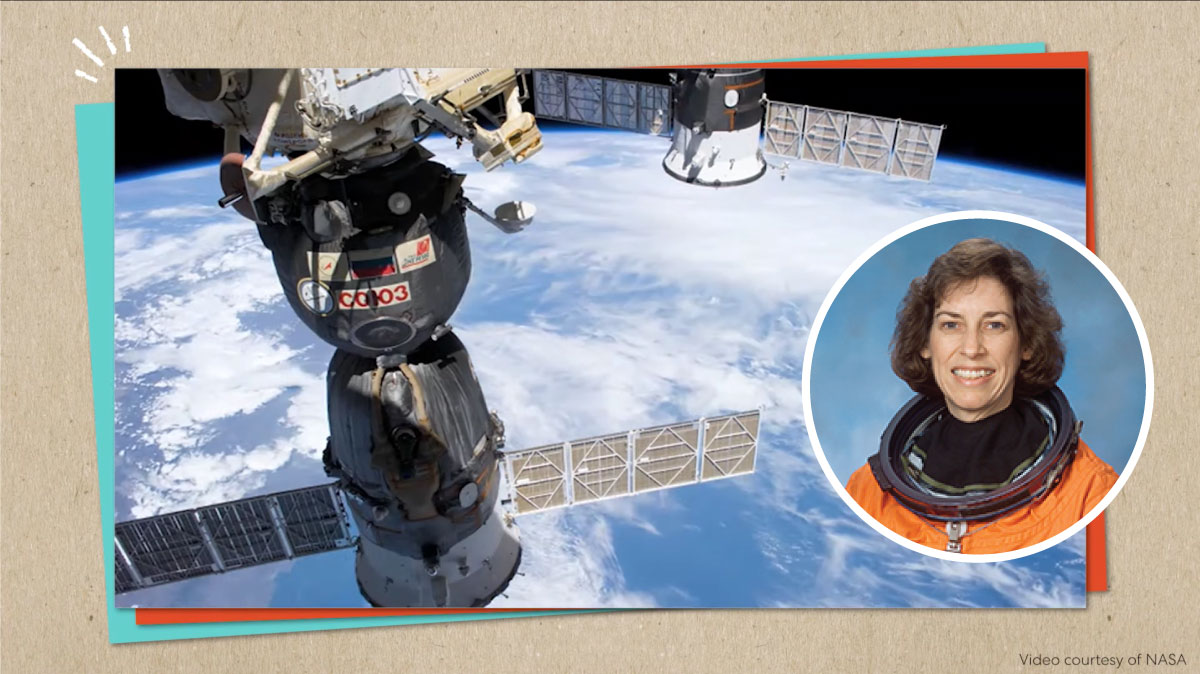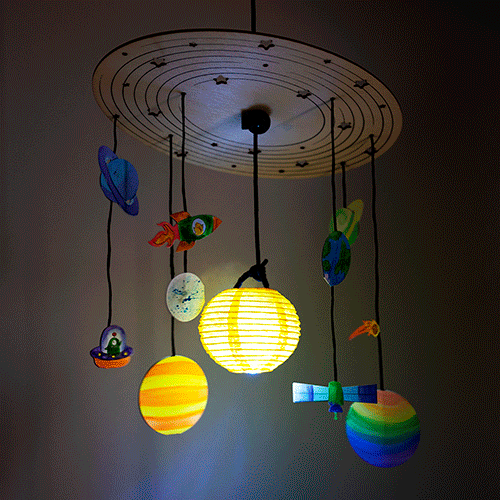- Straw Rockets
(Ages 3+)
How fast do you think a rocket needs to go in order to launch into orbit? A shuttle needs to go from 0 to 18,000 miles per hour to get to space! (This is 9 times faster than the speed of a rifle bullet!) While these paper straw rockets don't fly nearly as fast, we had a bunch of fun watching them zoom off. Give it a try and see how well your rockets fly!
Read the step-by-step tutorial or watch the video below:
- Jet Pack Costume
(Ages 5-11)
Turn your little one into an astronaut ready to blast off with this simple DIY costume.
- Galactic Glow Art
(Ages 5+)
It’s glow time! Use the science of fluorescence and space-themed stencils to create art that’s out of this world. Then try out other creative ideas for exploring fluorescence at home — from writing messages that only show up under UV light to designing your own stencils for more galactic glow fun.
- Pom-Pom Solar System
(Ages 5+)
Learn more about the planets in our solar system with this charming pom-pom mobile! A perfect DIY gift for the babies (or space-loving grownups) in your life.
- Spinning Space Orrery
(Ages 9-16)
For a long, long time, people thought that the Sun and all of the other planets revolved around the Earth. This was called the geocentric, or Earth-centered, model of the solar system. Of course, now we know that the Sun is the center of the solar system, not the Earth - the solar system is actually heliocentric, or Sun-centered.
But the geocentric and heliocentric models had something in common - astronomers used orreries to study them! An orrery is a mechanical model of the motion of the planets in our solar system. Try making your own orrery by downloading the printable here!
- Astronaut Starter Kit
(Ages 5+)
Blast off into STEM learning with this astronaut starter kit! Build and launch a pair of model orbiter spaceships using the power of pumps. Paint a set of model planets, then construct a miniature solar system that really spins.
- Moon Crater Experiment
(Ages 5+)
When you look up at the moon at night, it often looks like there are some grey areas and some white areas on the surface. The grey areas are called craters. Have you ever wondered how the moon's craters are formed? If the answer is yes, then this experiment is just right for you. Make your own moon surface with flour and oil and then drop meteorites (small rocks and pebbles) from varying heights to create your own craters!
Read the step-by-step tutorial or watch the video below:
- Moon Darts
(Ages 7+)
Harness the power of pressurized air to build the squeeze-action launchers, and then practice your shooting with the felt moon board. Try a solo challenge to hit all the different craters, or go head-to-head with a friend in a series of dart games. Then read about our magnificent Moon and what makes it so out of this world.
- Space Banner
(Ages 9+)
Give your walls an out-of-this-world accent with a space banner!
- Solar Lantern
(Ages 5+)
Illuminate your adventures with a solar-powered lantern! Inside a wood lantern that you build yourself, a solar LED candle uses energy from the Sun to turn on in the dark — and turn off in the light. Learn about the Sun’s incredible energy, the electronics that make the candle work, and the ways people use eco-friendly solar power in the world around you.
- DIY Pressure Bottle Rocket
(Ages 9-16)
Water squirters work by pressurizing reservoirs of water with air. As you pump the squirter, it gradually adds air to the reservoir, increasing the pressure. When you pull the trigger, the pressure is allowed to release and a stream of water shoots out! In this DIY project, we'll learn how to use the exact sample principles found in water squirters to launch a water rocket sky-high!
Hold a Jupiter model in your hands and learn about Jupiter’s mesmerizing atmosphere. Watch the video tutorial below!
- Galactic Painting
(Ages 5-13)
Bring outer space into your home with some paint, construction paper, and an old toothbrush!
- Planet Bath Bombs
(Ages 5+)
Dive into kid-friendly chemistry with a set of planet-themed bath bombs you crafted yourself! Mix together citric acid, baking soda, cornstarch, and food coloring to make a variety of colorful bath bomb powders. Use a set of molds to shape the powders into multi-layered bath bombs inspired by the layers of the Earth.
- Clay Rocket
(Ages 9-16)
Become a rocket scientist by building your own clay rocket with air dry clay and an old toilet paper tube!
- Bottle Rocket
(Ages 9+)
Get ready to blast off into the air with your very own bottle rocket. Assemble your launcher, rocket, funnel, and launch mixture to experience some extremely fizzy fun.
- Light-Up Mason Jar
(Ages 5-16)
Bring the stars to you and learn about the amazing night sky by creating your own mini-constellation jar that can light up. Download our constellation printable here. Or for some winter-themed fun, you can create your own light-up jar of snowflakes!
- Solar Crayon Recycler
(Ages 5+)
Build your own crayon recycler, then harness the power of the sun to heat and melt old crayons into new ones! Discover different ways to capture and use the Sun’s heat, and learn all about the eco-friendly use of solar energy.
Aden, a 9-year-old rocket enthusiast, interviews Dr. Ellen Ochoa, a veteran NASA astronaut.
Watch the video below!
- Solar System
(Ages 5+)
Learn more about planets in our solar system and discover how meteors form craters on the moon. This outer space project kit includes watercolors to create beautiful paper planets. Use your planets to create your own solar system mobile, complete with a light-up sun in the center. Play a game and create a meteor launcher to test your skill shooting for the moon!

These 20 Space Activities for Kids Are Out of This World
From distant stars, to black holes, to the search for life on other planets, outer space has so much to explore. Inspire your child to think out of the box (and out of this world!) with our favorite space-themed science projects.
